New Shawn McCadden Videos About The EPA RRP Rule; RRP Information For Renovators
 I recently completed a series of seven videos about the new EPA RRP rule. The RRP videos were done for Remodeling magazine. They are posted to the Remodeling TV area of Remodeling magazine’s web site.
I recently completed a series of seven videos about the new EPA RRP rule. The RRP videos were done for Remodeling magazine. They are posted to the Remodeling TV area of Remodeling magazine’s web site.
The videos are sponsored by The Home Depot. The video series is titled “The Insider's Guide to the EPA's Renovation, Repair and Painting Rule”. The series covers critical information about the Environmental Protection Agency's RRP rule and certification process, and explains how the rule may affect your business.
I had a lot of fun doing the videos. Lots of great people donated their time, knowledge and expertise. I also learned a lot from 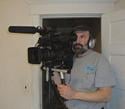 writing the script, interviewing contributors, editing the script with the magazine’s editor Sal Alfano, reviewing the raw footage, and working with the videographer, Chuck Greeen of Perpetual Motion Pictures. Working with Chuck was a unique advantage. As a fellow remodeler and Certified Renovator, Chuck not only filmed and edited the videos, he also contributed greatly to the content and success of the whole project.
writing the script, interviewing contributors, editing the script with the magazine’s editor Sal Alfano, reviewing the raw footage, and working with the videographer, Chuck Greeen of Perpetual Motion Pictures. Working with Chuck was a unique advantage. As a fellow remodeler and Certified Renovator, Chuck not only filmed and edited the videos, he also contributed greatly to the content and success of the whole project.
Here is a list of the videos, a brief description of what is discussed in each as well as links to view them:
Video One: The EPA RRP Rule and Your Business
This video covers the business responsibilities, associated liabilities and risks related to the RRP Rule. Kermit Baker, Senior Research Fellow at Harvard University's Joint Center for Housing Studies stresses that remodelers need to become experts in this area or leave the work to others who are. Attorney Mike Sams of Kenney & Sams, P.C. warns about the legal liabilities for failure to follow the regulations. Shawn McCadden discusses the firm and worker certification process, related fees as well as certified renovator and firm responsibilities.
Video Two: RRP Training
This video covers the worker training requirements of the rule and the content of the EPA Certified Renovator training class. Shawn McCadden also discusses the importance and benefits of choosing a training class conducted by a training instructor with real life renovation experience.
Video Three: EPA RRP Notification Requirements
The EPA RRP rule specifies certain notification requirements depending on where the work is done and who occupies and or visits the building being renovated. This video covers these requirements, related firm documentation requirements as well as the information and documentation that must be given to property owners and others. Shawn McCadden also discusses many of the important details that must be included in the required documentation.
Video Four: RRP Work Practices
This video includes a summary of the required lead-safe work practices required under the RRP Rule. Shawn McCadden walks through critical considerations related to the rule that must be followed to stay in compliance with the rule, protect occupants and workers and to control costs. Shawn also discusses interior and exterior cleaning and cleaning verification requirements.
Video Five: RRP Record Keeping
Inspection of the required documentation under the rule will be a major enforcement tool used by EPA. In this video Shawn McCadden discusses the required documentation related to worksite activities as well as many business administration activities. Mark Paskell of the Contractor Coaching Partnership shares a few of the many methods EPA will have at their disposal to inspect and verify a firm’s compliance with the rule. Shawn adds several more methods to Mark’s list and also discusses the penalties and fines EPA can assess on violators.
Video Six: Exemptions to RRP Work Practices
In this video Shawn McCadden gives examples of when, where and why the RRP rule and work practices are not required under the rule. Shawn stresses that even if the work practices are not required under the RRP rule, your business will still be liable if lead poisoning and or contamination results from the way work is performed. Shawn and contractor insurance expert Tom Messier of Mason and Mason Insurance both stress the importance of verifying proper and adequate insurance coverage to protect your business, available coverage options as well as related costs for coverage.
Video Seven: Business Considerations and Summary
Shawn Mccadden stresses that this new rule is a game changer. Shawn tells us businesses must take this new rule seriously and adjust their business practices accordingly to protect profits and control liabilities. Mark Paskell of the Contractor Coaching Partnership stresses that contractors should verify that the documentation forms they use will comply with the rule and also assist the business in managing and performing the work. Gerry McGonagle of Belfor Property Restoration offers his advice on qualifying the right employees to do the work. Shawn also discusses some of the new responsibilities the rule brings with it for employees in all positions within the business.

 Looking for accurate information about the EPA RRP rule?
Looking for accurate information about the EPA RRP rule? 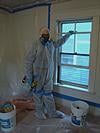 Renovators doing RRP work definitely need to know the difference between renovations and abatement. Unless specifically licenced to do so, renovators are not allowed to do abatement work. Renovators would be wise to make sure property owners know the difference as well. Employees should also be clear on the difference between renovations vs abatement, so as not to misrepresent the work they are doing when discussing a remodeling project with clients and prospects.
Renovators doing RRP work definitely need to know the difference between renovations and abatement. Unless specifically licenced to do so, renovators are not allowed to do abatement work. Renovators would be wise to make sure property owners know the difference as well. Employees should also be clear on the difference between renovations vs abatement, so as not to misrepresent the work they are doing when discussing a remodeling project with clients and prospects. A project resulting in the permanent removal of lead paint hazards, conducted by a company who, through its name or promotional literature, represents, or advertises to be in the business of performing lead paint activities.
A project resulting in the permanent removal of lead paint hazards, conducted by a company who, through its name or promotional literature, represents, or advertises to be in the business of performing lead paint activities. Abatements are not covered by the RRP rule.
Abatements are not covered by the RRP rule.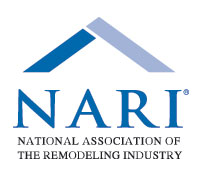 Fortunately for me, in the early days of owning my remodeling business, I learned a lot about lead and lead safe work practices through the NARI/HUD Lead Safe Remodeler training program that came out in the mid 1990’s. The current Certified Renovator training is only one day and really only teaches attendees how to contain the dust and debris. Different than the current class, the NARI/HUD class was two days long and actually thought us lead-safe work practices that eliminated or significantly reduced the creation of lead dust and debris. Attending that class was definitely worth the investment of time and money. Both I and my employees changed the way we thought about the work we did and the methods we used going forward.
Fortunately for me, in the early days of owning my remodeling business, I learned a lot about lead and lead safe work practices through the NARI/HUD Lead Safe Remodeler training program that came out in the mid 1990’s. The current Certified Renovator training is only one day and really only teaches attendees how to contain the dust and debris. Different than the current class, the NARI/HUD class was two days long and actually thought us lead-safe work practices that eliminated or significantly reduced the creation of lead dust and debris. Attending that class was definitely worth the investment of time and money. Both I and my employees changed the way we thought about the work we did and the methods we used going forward. Lead poisoning can occur when people are exposed to large or small amounts of lead over time. Lead builds up in the body and may cause temporary or permanent damage. A blood lead test can show whether your body has absorbed a dangerous amount of lead. A high blood lead level is an indication that lead is building up in the body faster than it can be eliminated.
Lead poisoning can occur when people are exposed to large or small amounts of lead over time. Lead builds up in the body and may cause temporary or permanent damage. A blood lead test can show whether your body has absorbed a dangerous amount of lead. A high blood lead level is an indication that lead is building up in the body faster than it can be eliminated.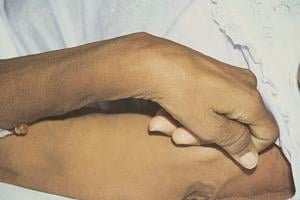 Later Signs and Symptoms:
Later Signs and Symptoms: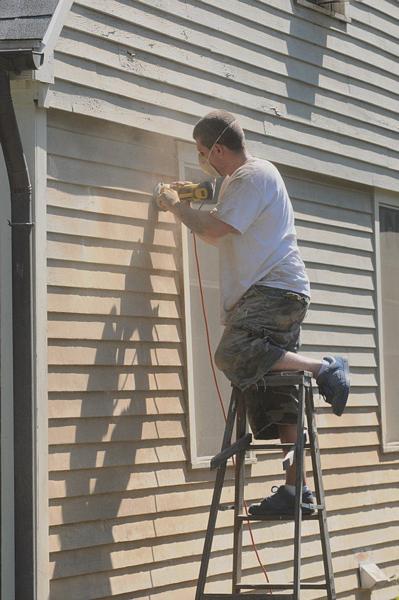
 Rhode Island has been operating a Lead-Safe Remodeler/Renovator Program since 2001 and has licensed over 1,500 Lead-Safe Remodeler/Renovators. In 2010, the Environmental Protection Agency (EPA) created its own Lead-Safe Remodeler/Renovator Program, known as the Lead-Based Paint Renovation, Repair, and Painting Rule. Rhode Island was the first New England state granted authority by EPA to continue its state Remodeler/Renovator program.
Rhode Island has been operating a Lead-Safe Remodeler/Renovator Program since 2001 and has licensed over 1,500 Lead-Safe Remodeler/Renovators. In 2010, the Environmental Protection Agency (EPA) created its own Lead-Safe Remodeler/Renovator Program, known as the Lead-Based Paint Renovation, Repair, and Painting Rule. Rhode Island was the first New England state granted authority by EPA to continue its state Remodeler/Renovator program.  Rhode Island's RRP Rule applies to contractors, landlords, property managers, homeowners, and anyone else who disturbs painted surfaces on pre-1978 homes or child care facilities. This includes general contractors as well as special trade contractors, such as painters, plumbers, carpenters, and electricians.
Rhode Island's RRP Rule applies to contractors, landlords, property managers, homeowners, and anyone else who disturbs painted surfaces on pre-1978 homes or child care facilities. This includes general contractors as well as special trade contractors, such as painters, plumbers, carpenters, and electricians.
 When work is complete, Lead-Safe Remodeler/Renovators and their workers must:
When work is complete, Lead-Safe Remodeler/Renovators and their workers must: Because of one of the EPA RRP amendments, there is a new requirement regarding documentation. As of the amendment that took effect on July 6th, 2010, when the final invoice for the renovation is delivered, or within 30 days of the completion of the renovation, whichever is earlier, the renovation firm must provide information demonstrating compliance with the training and work practice requirements of the RRP rule to the owner of the building being renovated and, if different, to the occupants of the renovated housing or the operator of the child-occupied facility.
Because of one of the EPA RRP amendments, there is a new requirement regarding documentation. As of the amendment that took effect on July 6th, 2010, when the final invoice for the renovation is delivered, or within 30 days of the completion of the renovation, whichever is earlier, the renovation firm must provide information demonstrating compliance with the training and work practice requirements of the RRP rule to the owner of the building being renovated and, if different, to the occupants of the renovated housing or the operator of the child-occupied facility.
 Renovators doing RRP work will be involved with lead testing. Lead testing for RRP related projects can be done by the certified renovator, a certified lead inspector or certified lead risk assessor. The type of testing that can be done by each varies, but regardless of who does the testing written reports are required and, by law, certain individuals must be given a copy of those reports if lead is found. The EPA RRP rule is specific about
Renovators doing RRP work will be involved with lead testing. Lead testing for RRP related projects can be done by the certified renovator, a certified lead inspector or certified lead risk assessor. The type of testing that can be done by each varies, but regardless of who does the testing written reports are required and, by law, certain individuals must be given a copy of those reports if lead is found. The EPA RRP rule is specific about  Regardless of the original purpose of testing (RRP or any other purpose), once a reports exists, the Lead Disclosure Rule below dictates who must receive the reports and when in regards to the selling or leasing of a property. The rule also specifies what documentation must be created and maintained to prove the reports were distributed to the required parties. Because of the considerations of the Lead Disclosure Rule, I recommend renovators get the property owner's written permission prior to conducting any lead testing.
Regardless of the original purpose of testing (RRP or any other purpose), once a reports exists, the Lead Disclosure Rule below dictates who must receive the reports and when in regards to the selling or leasing of a property. The rule also specifies what documentation must be created and maintained to prove the reports were distributed to the required parties. Because of the considerations of the Lead Disclosure Rule, I recommend renovators get the property owner's written permission prior to conducting any lead testing. Give an EPA-approved information pamphlet on identifying and controlling lead-based paint hazards ("Protect Your Family From Lead In Your Home" pamphlet, currently available in English, Spanish, Vietnamese, Russian, Arabic and Somali).
Give an EPA-approved information pamphlet on identifying and controlling lead-based paint hazards ("Protect Your Family From Lead In Your Home" pamphlet, currently available in English, Spanish, Vietnamese, Russian, Arabic and Somali). Renovators working under the EPA RRP Rule should become familiar with these terms and their meanings. If you haven't noticed already, the EPA has taken upon itself to create new and different definitions to many common terms already used in the renovation and remodeling industry. This can cause confusion when attempting to understand and interpret the EPA RRP Rule. Knowing these terms and the related "EPA RRP Definitions" for these terms can help avoid inaccurate assumptions and potential fines.
Renovators working under the EPA RRP Rule should become familiar with these terms and their meanings. If you haven't noticed already, the EPA has taken upon itself to create new and different definitions to many common terms already used in the renovation and remodeling industry. This can cause confusion when attempting to understand and interpret the EPA RRP Rule. Knowing these terms and the related "EPA RRP Definitions" for these terms can help avoid inaccurate assumptions and potential fines. In a June 3, 2010
In a June 3, 2010 
 Statistics have shown, including EPA's own research, that more children are poisoned by lead due to renovations as a result of their parents doing the work than by professional remodelers.
Statistics have shown, including EPA's own research, that more children are poisoned by lead due to renovations as a result of their parents doing the work than by professional remodelers. 



